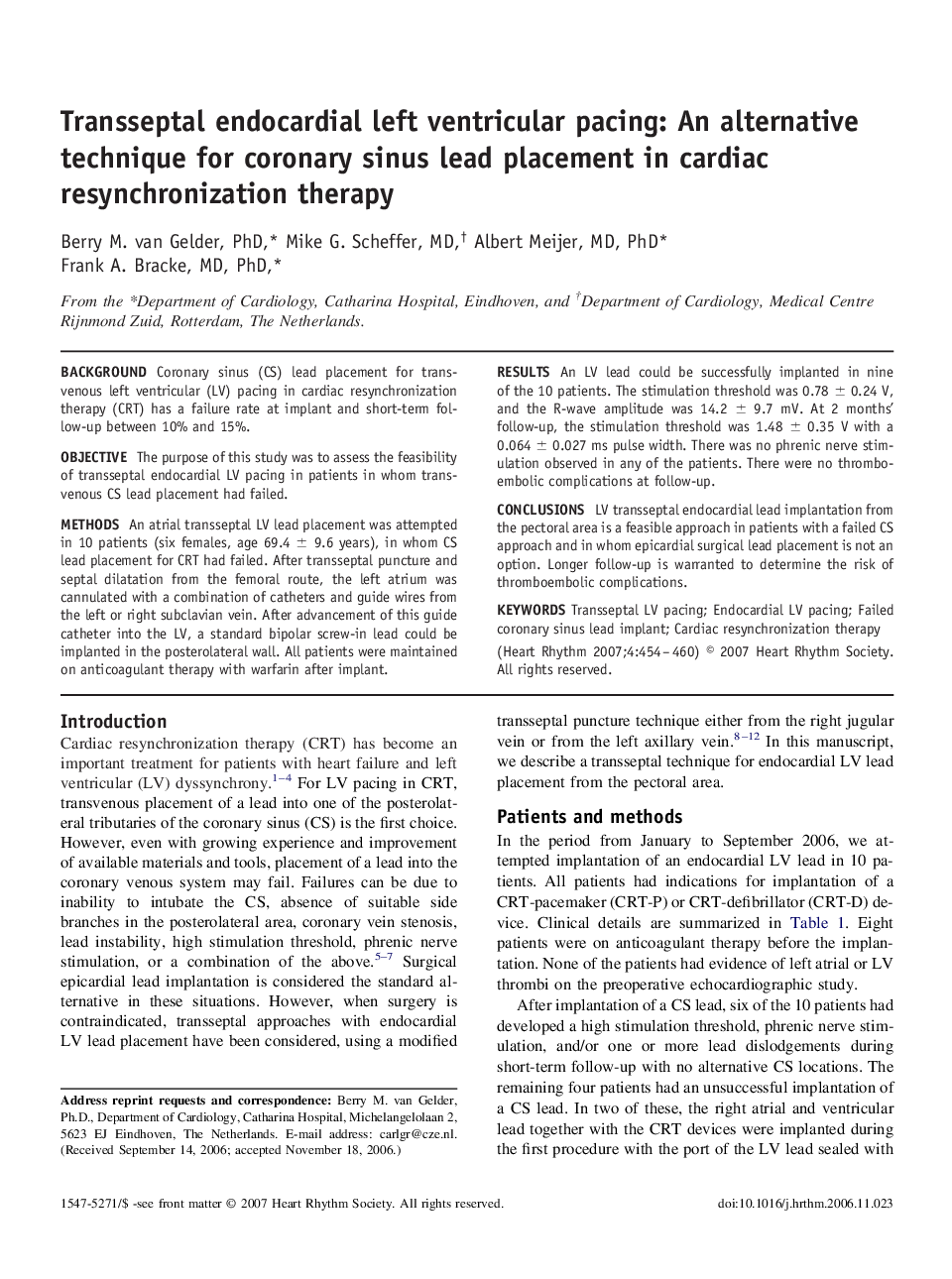| کد مقاله | کد نشریه | سال انتشار | مقاله انگلیسی | نسخه تمام متن |
|---|---|---|---|---|
| 2924301 | 1175901 | 2007 | 7 صفحه PDF | دانلود رایگان |

BackgroundCoronary sinus (CS) lead placement for transvenous left ventricular (LV) pacing in cardiac resynchronization therapy (CRT) has a failure rate at implant and short-term follow-up between 10% and 15%.ObjectiveThe purpose of this study was to assess the feasibility of transseptal endocardial LV pacing in patients in whom transvenous CS lead placement had failed.MethodsAn atrial transseptal LV lead placement was attempted in 10 patients (six females, age 69.4 ± 9.6 years), in whom CS lead placement for CRT had failed. After transseptal puncture and septal dilatation from the femoral route, the left atrium was cannulated with a combination of catheters and guide wires from the left or right subclavian vein. After advancement of this guide catheter into the LV, a standard bipolar screw-in lead could be implanted in the posterolateral wall. All patients were maintained on anticoagulant therapy with warfarin after implant.ResultsAn LV lead could be successfully implanted in nine of the 10 patients. The stimulation threshold was 0.78 ± 0.24 V, and the R-wave amplitude was 14.2 ± 9.7 mV. At 2 months’ follow-up, the stimulation threshold was 1.48 ± 0.35 V with a 0.064 ± 0.027 ms pulse width. There was no phrenic nerve stimulation observed in any of the patients. There were no thromboembolic complications at follow-up.ConclusionsLV transseptal endocardial lead implantation from the pectoral area is a feasible approach in patients with a failed CS approach and in whom epicardial surgical lead placement is not an option. Longer follow-up is warranted to determine the risk of thromboembolic complications.
Journal: Heart Rhythm - Volume 4, Issue 4, April 2007, Pages 454–460